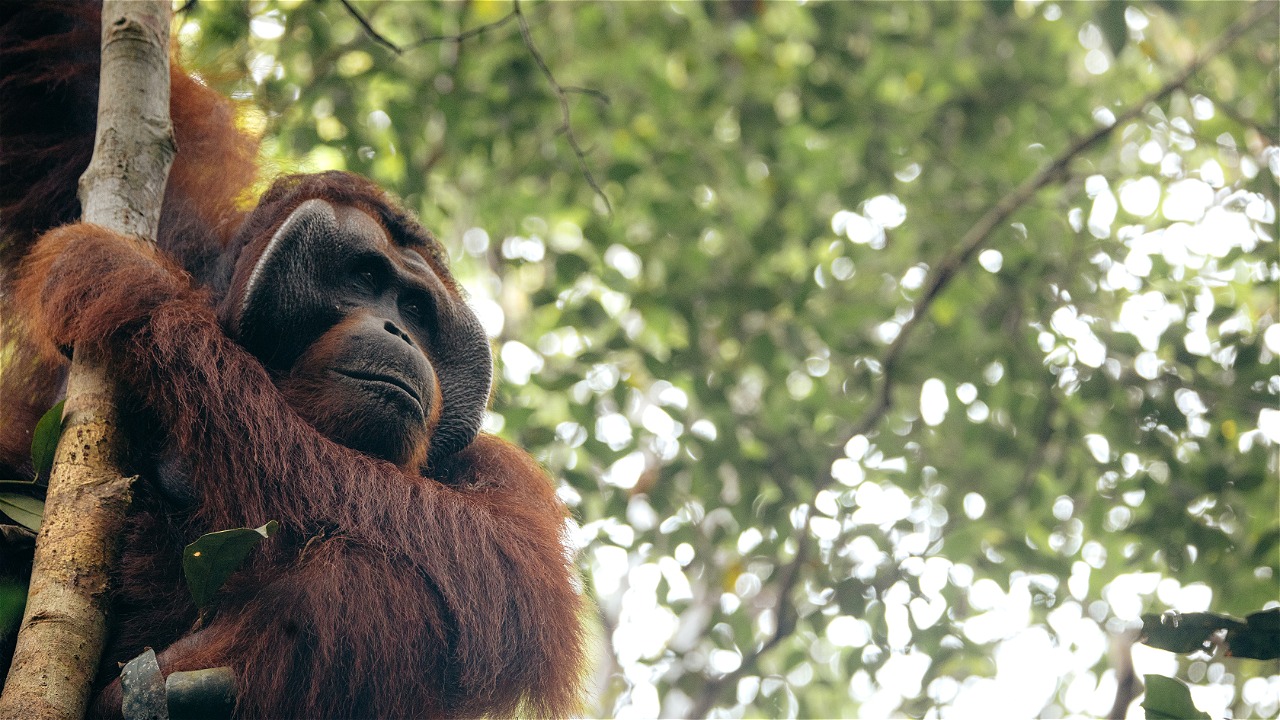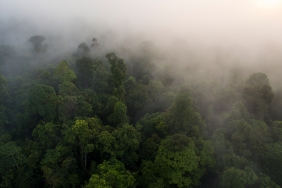SUMATRAN ORANGUTANS, ANIMAL ARCHITECTS
By: Azhar
In a broad sense, a home is a place of refuge, to enjoy life, to rest. A home should provide peace, pleasure, happiness, and comfort in all the events of life. (Frick, 2006:1). Almost the same but different names with humans, the house for animals is called a nest, the definition of a nest is a place of residence or a hiding place / usually for everything that is less good than a horde of vandals (Bahasa Indonesia dictionary).< br />
A nest is something that is intentionally or unintentionally built to be used as a breeding ground and or as a place to rest or sleep. Each nest has a different location for each type of animal, for example, one nest is located on a tree on the trunk, twigs, branches of trees, two nests are also located in trees that are made holes, the third nest is located on the ground, either on the surface of the ground, holes in the ground or in caves (Ali Kodra, 1990). Nest-making species often terliaht bird species, some of which are mammals, mammals that make nests in trees in Aceh forests such as, squirrels (Callosciurus notatus), sun bears (Helarctor malayanus) and Sumatran orangutans (Pongo abelii).
Sumatran orangutans are arboreal animals that spend most of their lives up in the trees, from eating, drinking, to resting/sleeping in nests that they build on the branches of trees, Sumatran orangutans need nests, they sleep in their nests, every night they sleep in a new nest. Tree trunks are systematically arranged into nests, and the width of the round nest can reach one meter. Orangutans always make nests in the morning to rest and play, if the female has several children, she can make 2 or 3 nests per day. Orangutan females use the nest as a place to give birth.
Nest Building Skills
The definition of architecture is the art and science of designing and making the construction of buildings, bridges and others, the method and style of design of a building construction (Kamus Besar Bahasa Indonesia). Orangutans can be said to be architect animals, this is indicated by the behavior of orangutans that build nests indicated as a behavior that shows the intelligence of great apes (Grzimerk, 1972).
Orangutans design their nest building in several stages, first, rimming, which is bending and horizontally until it forms a nest circle and then held by bending other branches to form a braided branch lock. Second, hanging, which is bending the branch into the nest plate to form a nest bag. The third is pillaring, which is bending the branches to the bottom of the nest as a support for the nest, and finally releasing (losse), which is breaking several branches from the tree and placing them into the nest as a base or at the top as a roof. This orangutan nest is strong and elastic enough to withstand the weight of a 50-90 kg male in the wild, which is the same weight as an adult human.
Orangutans position the nest site as follows, position one, the nest is located near the main trunk, position two, the nest is located in the middle or at the edge of the branching without using other trees or tree branching, position three, the nest is located at the top of the tree, position four, the nest is located between two or more branches, from different tree edges (Van Schaik and Idrusman, 1996).
The location of the nest has been positioned very intelligently, namely in locations where there are many food sources available, salt lick areas and at the confluence of hill ridges or on hillsides that may get a warm sunny view but are protected from the wind and the strength of the nest is flexible and elastic.
Nest building skills have been taught by the instructor, namely the mother, where orangutans from infancy to weaning will see firsthand the procession of nesting nests, abilities and intelligence honed by the mother for nine years, after which the orangutan will be weaned / separated, the Sumatran orangutan is the longest animal in the world to be raised by its mother for nine years, designing nests, choosing nest locations, choosing branches of nest trees and making nests close to fruit trees is one of the natural skills, all the ability to design nest building has been taught by its mother for nine years. The ability of orangutan architects to learn in the wild is a positive part of the cleverness of orangutans to design nests, in addition to the mother teaching the nest, the factor of the length of time with the mother for nine years makes the mother unproductive, naturally vulnerable to extinction because the orangutan mother takes too long to reproduce with a span of nine years.< br />
The Aceh Forest is the Great House of the Sumatran Orangutan
According to estimates, the number of wild orangutans in the forests of Sumatra is only about 6,500 individuals, in the next 20 years, according to the IUCN in 1993 about 80% of their habitat has been lost or destroyed. And IUCN calculates that if this situation is left unchecked, then in the next 10 - 20 years orangutans will become extinct. So that IUCN categorizes orangutans as critically endangered or species or as endangered animals.
Forests as a place to live eat breed nests for Sumatran orangutans and without natural carrying capacity, orangutans are just waiting for extinction, the seriousness of the Aceh Government and the Central Government is needed not to increase the area of oil palm plantations, mining expansion, need seriousness to save the remaining orangutan population, then orangutans will survive and have a good fate in their habitat. Aceh's forests are a big home for Sumatran orangutans, in fact Aceh's forests are the last habitat of Sumatran orangutans in the world.
Azhar
Satwaliar Observer and Environmental Practitioner of Aceh.
Jalan Kuwera 1 No 21 Lamprit, Banda Aceh, Aceh Province.
Phone 081269923974. email:azhar_ou@yahoo.com





